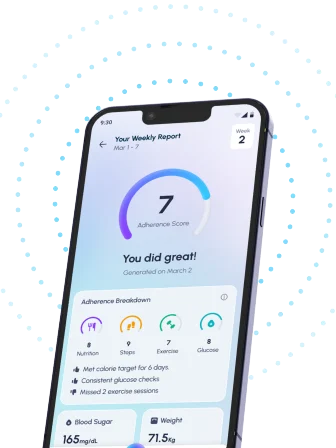Table of Contents
- Farro for Diabetics: Benefits & How to Incorporate It
- Is Farro Good for Blood Sugar Control? A Diabetic’s Guide
- Unlocking Farro’s Nutritional Power: A Diabetes-Friendly Approach
- Managing Diabetes with Farro: Recipes and Meal Planning
- Whole Grains for Diabetes: Exploring the Farro Advantage
- Frequently Asked Questions
- References
Living with diabetes often means navigating a complex world of dietary restrictions. But what if I told you there’s a delicious and surprisingly versatile grain that can be a true ally in your blood sugar management journey? This blog post delves into Unlocking the Diabetes-Friendly Power of Farro: A Nutritional Deep Dive. We’ll explore why this ancient grain is a fantastic addition to a diabetes-friendly diet, examining its nutritional profile, glycemic index, and practical ways to incorporate it into your meals. Get ready to discover a new favorite ingredient that’s both tasty and beneficial for your health!
Farro for Diabetics: Benefits & How to Incorporate It
Understanding Farro’s Role in Diabetes Management
For individuals in India and tropical countries managing diabetes, maintaining a balanced carbohydrate intake is crucial. Generally, a meal containing 45–60 grams of carbs is suggested, though this varies depending on individual needs and activity levels. Farro, an ancient grain, offers a compelling alternative to refined grains, potentially aiding in blood sugar control. Its high fiber content promotes slower digestion and absorption of glucose, leading to a more gradual rise in blood sugar levels compared to white rice or refined wheat. This makes it a valuable addition to a diabetes-friendly diet.
Nutritional Advantages of Farro for Diabetics
Farro boasts a superior nutritional profile compared to many other grains. It’s rich in magnesium, a mineral vital for insulin sensitivity and overall metabolic health. The high fiber content also aids in better digestion and helps regulate blood sugar, reducing the risk of spikes after meals. Additionally, farro provides a good source of protein and essential minerals, which are important components of a balanced diet for diabetes management. Incorporating farro into meals can help you feel fuller for longer, potentially reducing overall calorie intake and managing weight, a critical factor in diabetes management. For more information on other grains beneficial for diabetics, you might find our article on Is Ragi Good for Diabetic Patients? helpful.
Incorporating Farro into Your Diet: Indian & Tropical Adaptations
Consider substituting farro for rice in your favorite Indian dishes. It can be used in biryanis, pulaos, or even as a base for curries. Its nutty flavor complements many spices commonly used in Indian cuisine. In tropical regions, farro salads offer a refreshing alternative, incorporating local fruits and vegetables. Remember to consult your doctor or a registered dietitian to determine the appropriate portion size of farro in your meal plan, ensuring it aligns with your individual daily carbohydrate allowance. Start slowly, gradually increasing your farro intake to observe its effect on your blood sugar levels. This allows for personalized adjustments based on your body’s response. If you’re also considering other options like dalia, you might find our guide on Which Dalia Is Best for Diabetics? Benefits & Recipes useful.
Is Farro Good for Blood Sugar Control? A Diabetic’s Guide
Managing blood sugar levels is crucial for individuals with diabetes in India and across tropical countries. Maintaining a healthy diet plays a vital role, and understanding the glycemic impact of foods is key. So, is farro a good choice? Let’s delve into its nutritional profile.
Farro’s Glycemic Impact and Benefits for Diabetics
Farro, an ancient grain, boasts a lower glycemic index (GI) than many other grains. This means it causes a slower and more gradual rise in blood sugar levels compared to refined carbohydrates like white rice or bread. A lower GI is beneficial for individuals with diabetes or prediabetes, helping them maintain blood sugar levels within the healthy range (70–99 mg/dL fasting). Unlike foods that spike blood sugar (leading to levels of 100–125 mg/dL, indicating prediabetes, or even higher, indicating diabetes), farro offers a more stable energy release.
Nutritional Profile and Regional Considerations
Farro is rich in fiber, which aids in regulating blood sugar levels. Its protein content also contributes to satiety, preventing overeating and further assisting blood sugar management. In the context of Indian and tropical diets, farro can be a valuable addition, offering a nutritious alternative to traditionally higher-GI grains. Its versatility allows for easy incorporation into various dishes, making it a practical choice for diverse culinary preferences. Remember, consulting a doctor or registered dietitian is crucial for personalized dietary advice tailored to your specific needs and health conditions. For more information on other foods that can help regulate blood glucose, you might find our article on Discover How Fermented Foods Help Regulate Blood Glucose Levels helpful.
Practical Tips for Incorporating Farro
Consider substituting farro for rice in your meals, or use it as a base for salads and grain bowls. The high fiber content will contribute to a feeling of fullness and help to avoid blood sugar spikes. Experiment with different farro recipes to find what suits your palate best. Remember, consistent monitoring of your blood sugar levels remains essential, regardless of dietary changes. It’s also important to understand the glycemic impact of other sweeteners. For example, you might be interested in reading our article on Is Brown Sugar Good for Diabetics? to compare it to farro and other options.
Unlocking Farro’s Nutritional Power: A Diabetes-Friendly Approach
Up to 80% of Type 2 diabetes cases can be prevented or delayed through lifestyle changes, including dietary modifications. Lifestyle changes are crucial, and incorporating foods like farro can significantly contribute to better blood sugar management. Farro, an ancient grain popular in the Mediterranean and increasingly available in Indian and tropical markets, offers a unique nutritional profile beneficial for individuals managing diabetes or aiming to prevent it.
The Diabetes-Friendly Benefits of Farro
Farro boasts a lower glycemic index (GI) than many other grains, meaning it causes a slower, more gradual rise in blood sugar levels after consumption. This is crucial for individuals with diabetes who need to avoid rapid spikes. Its high fiber content further aids in regulating blood sugar by slowing down digestion and improving insulin sensitivity. Furthermore, farro is rich in magnesium, a mineral often deficient in individuals with diabetes and essential for proper insulin function. The abundance of protein and healthy fats also contributes to sustained energy levels and helps prevent blood sugar crashes.
Incorporating Farro into Your Diet
Incorporating farro into your diet is surprisingly easy. It can be used as a substitute for rice or other grains in various dishes, from salads and soups to pilafs and stews. In the Indian context, farro can be incorporated into traditional dishes, adding a nutritious twist to familiar recipes. Think of farro-based biryanis, kichdis, or even as a healthy alternative in South Indian breakfast dishes. Experiment with different spices and flavors to create delicious and diabetes-friendly meals. For more strategies on managing your diabetes as you age, check out our article on Managing Diabetes as You Age: Challenges and Solutions.
A Step Towards Better Health
Choosing farro as a staple grain is a proactive step towards better health, particularly in diabetes management or prevention. Its nutritional profile aligns perfectly with the need for a balanced diet crucial for maintaining healthy blood sugar levels. Embrace farro as a part of your healthy lifestyle journey, and consult with your healthcare provider or a registered dietitian for personalized dietary advice tailored to your specific needs and local food availability in Indian and tropical regions. And while we’re on the subject of diabetes-friendly foods, you might also be interested in learning more about Is Carrot Juice Good for Diabetes: The Ultimate Guide.
Managing Diabetes with Farro: Recipes and Meal Planning
Understanding Farro’s Role in Diabetes Management
Farro, an ancient grain, offers a compelling solution for individuals in India and tropical countries managing diabetes. Its low glycemic index (GI) means it releases sugar into the bloodstream slowly, preventing the sharp spikes associated with high-GI foods like white rice or sugary beverages. This is particularly crucial given that daily consumption of sugary beverages raises diabetes risk by 26%, a statistic highlighting the need for mindful food choices. Incorporating farro into your diet can help stabilize blood sugar levels and contribute to better overall diabetes management.
Practical Tips for Incorporating Farro
For those in tropical climates, farro salads are refreshing alternatives to heavier meals. Consider combining cooked farro with local vegetables like mango, cucumber, and coriander, adding a light lemon dressing. In India, farro can easily be integrated into existing dishes. Swap refined grains for farro in recipes like khichdi or biryani for a healthier twist. Experiment with spice blends to complement the nutty flavor of the grain, remembering to keep portion sizes moderate to maintain a balanced calorie intake.
Meal Planning and Recipes
Planning your meals ahead of time is essential for effective diabetes management. Prepare a weekly menu incorporating farro in diverse dishes. This ensures consistent blood sugar control and reduces the temptation to resort to high-GI options. Numerous online resources offer farro recipes tailored to Indian and tropical palates, providing inspiration for healthy and delicious meals. Remember to consult with your doctor or a registered dietitian to personalize your meal plan based on your specific needs and health conditions. For more ideas on diabetes-friendly foods, check out 20 Best Foods for People with Diabetes – Tap Health.
Next Steps: Embracing a Healthier You
Take control of your diabetes by exploring the versatile benefits of farro. Start small, gradually incorporating it into your diet, and observe how it impacts your blood sugar levels. Remember, consistent effort and informed choices are key to achieving long-term health improvements. For additional tips on managing your diabetes effectively, consider reading 10 Proven Tips for Effective Diabetes Management.
Whole Grains for Diabetes: Exploring the Farro Advantage
Farro’s Nutritional Profile: A Boon for Diabetic Management
Over 75% of individuals living with diabetes reside in low- and middle-income countries, a statistic highlighted by the IDF Diabetes Atlas. This underscores the critical need for accessible and effective diabetes management strategies, particularly in regions like India and other tropical countries. Farro, an ancient grain, emerges as a powerful ally in this fight. Its high fiber content contributes to improved blood sugar control, a crucial aspect of diabetes management. Furthermore, farro boasts a lower glycemic index (GI) compared to many refined grains, meaning it causes a slower and more gradual rise in blood glucose levels.
Incorporating Farro into Indian and Tropical Diets
The versatility of farro makes it easily adaptable to various cuisines. In India, for example, it can be incorporated into hearty salads, flavorful stews, or even used as a base for a unique and nutritious pulao. Its nutty flavor pairs well with spices commonly used in Indian and tropical cooking. Consider substituting farro for rice or refined grains in your regular meals to reap its health benefits. This simple swap can significantly impact blood sugar levels. For those interested in other whole grain options, exploring different types of grains such as rice may also be beneficial. You might find our article on Is Fermented Rice Good for Diabetes? helpful.
Practical Tips for Effective Farro Integration
Remember that while farro is beneficial, a holistic approach to diabetes management is essential. Combine farro consumption with regular exercise, a balanced diet rich in fruits and vegetables, and consistent monitoring of blood glucose levels. Consult with your healthcare provider or a registered dietitian to determine the ideal amount of farro to include in your personalized diet plan. Prioritizing whole grains like farro offers a delicious and effective pathway towards better diabetes management, especially relevant in resource-constrained settings. Understanding the nuances of different dietary approaches is also crucial. To learn more about this, you might want to read our article on Low-Carb vs. Moderate-Carb Diets for Diabetes: What Works Best?
Frequently Asked Questions on Diabetes-Friendly Farro
Q1. What is farro and how can it help manage diabetes?
Farro is an ancient grain with a low glycemic index (GI) and high fiber content. This helps slow down glucose absorption, leading to more stable blood sugar levels compared to refined grains like white rice. It’s also rich in magnesium, important for insulin sensitivity, and its protein keeps you feeling full.
Q2. How can I incorporate farro into my diet?
Farro is a versatile grain and can easily replace rice in many dishes. You can use it in biryanis, salads, and other recipes, adapting it to your preferred cuisine. Start by substituting a small portion of your usual rice with farro and gradually increase the amount.
Q3. What are the potential limitations or challenges of using farro for diabetes management?
While farro offers many benefits, it’s crucial to consult a doctor or dietitian to determine the appropriate portion size for your individual needs. Regular blood sugar monitoring is also essential, even when incorporating farro into your diet. Farro alone is not a cure for diabetes; a balanced diet and exercise are key.
Q4. Are there any specific benefits of farro for people with diabetes in tropical regions or India?
Farro’s benefits are relevant globally, but it’s particularly beneficial in tropical regions and India, where rice is a staple food. Replacing refined rice with farro offers a significant nutritional upgrade for diabetes management in these regions.
Q5. What is the most effective way to use farro for diabetes management?
For effective diabetes management, combine farro with a balanced diet and regular exercise. Consult a healthcare professional to personalize your farro intake and monitor your blood sugar levels regularly. Farro is a helpful tool, but it’s part of a broader, holistic approach.
References
- A Practical Guide to Integrated Type 2 Diabetes Care: https://www.hse.ie/eng/services/list/2/primarycare/east-coast-diabetes-service/management-of-type-2-diabetes/diabetes-and-pregnancy/icgp-guide-to-integrated-type-2.pdf
- Your Guide to Diabetes: Type 1 and Type 2: https://www.niddk.nih.gov/-/media/Files/Diabetes/YourGuide2Diabetes_508.pdf
s




